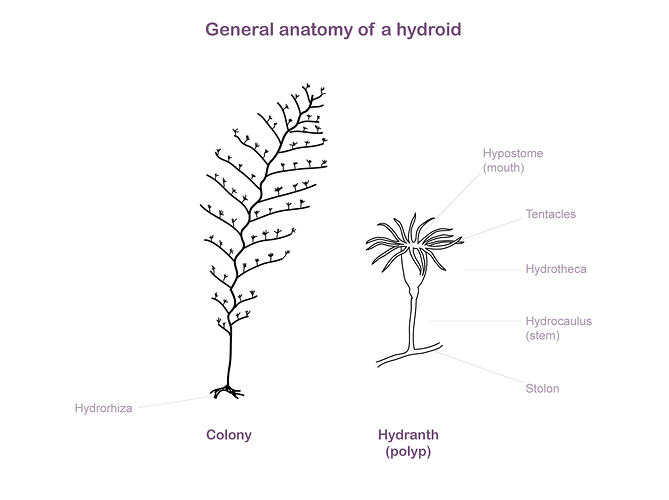General Description
Colony of individual polyps (hydranths) joined by root-like network of tubular stolons at the base. Colony shape is single stems. Colourless. Up to 5 mm long.
Biology
Colonies of this species are present and fertile most of year. They are common in ports around the globe.
Distribution
Widely distributed, likely Worldwide.
Habitat
Subtidal, mostly in sheltered waters. Opportunistic on a wide variety for habitats, often on invertebrates and algae.
More Information
-
Animal Type
-
Animal SubType
-
Brief Id
Chitonous cup on stem, colourless.
-
Maximum Size
5 mm
-
Habitats
-
Diet
Plankton or Particles
-
Diet Categories
Plankton
-
Hazards
Generally not harmful but still able to sting bare skin.
-
Endemicity
-
Commercial
No
-
Conservation Statuses
DSE Advisory List: Not listed, EPBC Act 1999: Not listed, IUCN Red List: Not listed
-
Depths
Shallow (1-30 m)
-
Water Column Locations
On or near seafloor
-
Taxon Name
-
Scientific Author
(Linnaeus, 1767)
-
Common Name
Hydroid
-
Phylum
-
Class
-
Subclass
-
Order
-
Family
-
Genus
-
Species Name
hemisphaerica

